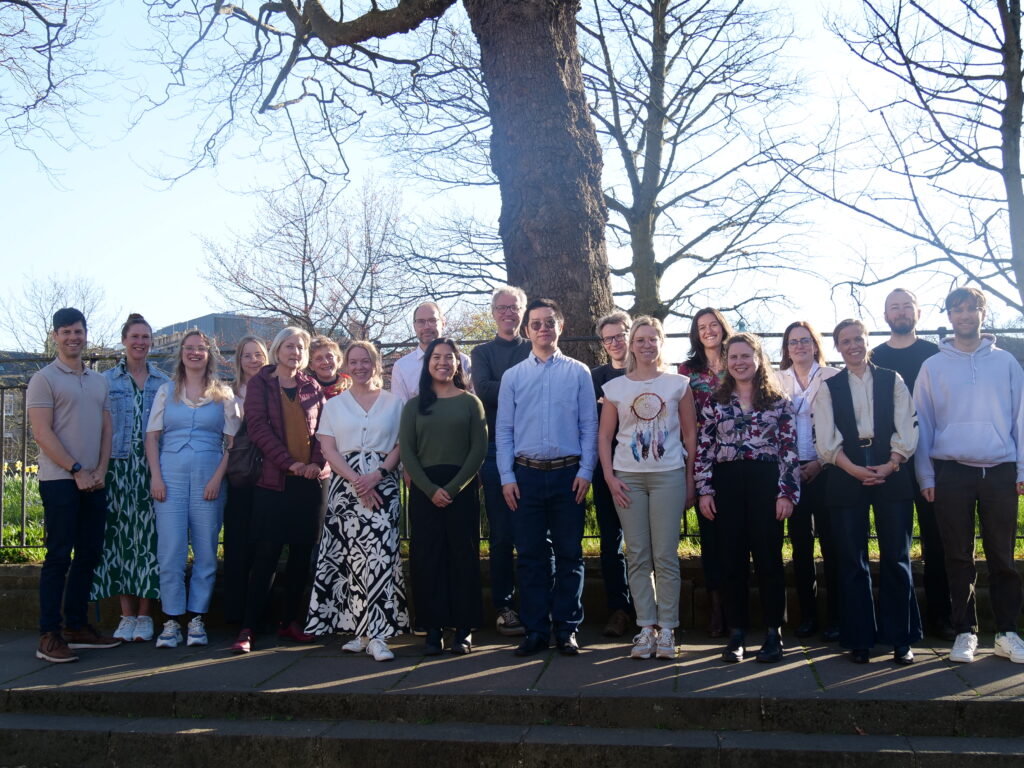
Project partners met in (unusually sunny) Edinburgh to reflect on the past year’s achievements and review next steps in the upcoming final year of AURORA.
On April 1-2, 2025, AURORA project partners met in Edinburgh, Scotland for their annual consortium meeting. The project is now moving into its final phases with one year remaining.
Each working group shared their updates with the whole consortium and gathered valuable input and feedback. A big topic among the researchers was the newly developed methods to produce and measure micro- and nanoplastics (MNPs) in biological samples. Many of these methods and testing approaches are now being finalized and starting to be applied in work packages focused on toxicology and exposure. “These methods have challenged just about every preconception our team has had about method development and validation,” said Douglas Walker from Emory University who led the methods development. Within such a new field and without existing approaches and protocols, he and his team have encountered a range of unique technical and scientific challenges during the development of new analytical approaches.
With these new methods online, other AURORA labs have now started to carry out micro- and nanoplastics (MNP) studies using donated placental tissue. Over 800 Placenta samples from two birth cohorts have now been measured, and our scientists are busy analyzing the data. Progress has also been made on the household exposure study, where dust samples taken from various households and 100 reproductive age women are now being analyzed for the presence of MNPs. Toxicologists from the consortium are also working with a wide range of MNP polymer types and concentrations in bioassays to assess them for their potential impacts on various health endpoints. A lot of preliminary results were shared within the consortium and are planned to be published in peer-reviewed journals in the coming year.
Major milestones from the past year include the publication of multiple peer-reviewed studies:
Since last spring, AURORA has taken over as the lead of the CUSP consortium and successfully co-organized the two final CUSP events in Brussels in February 2025. More about the events, including links to recordings, are provided in our news article.
You can learn more about all the people involved in AURORA on the team page as well as follow the latest updates on the project’s research via the news page and through the project’s LinkedIn page.